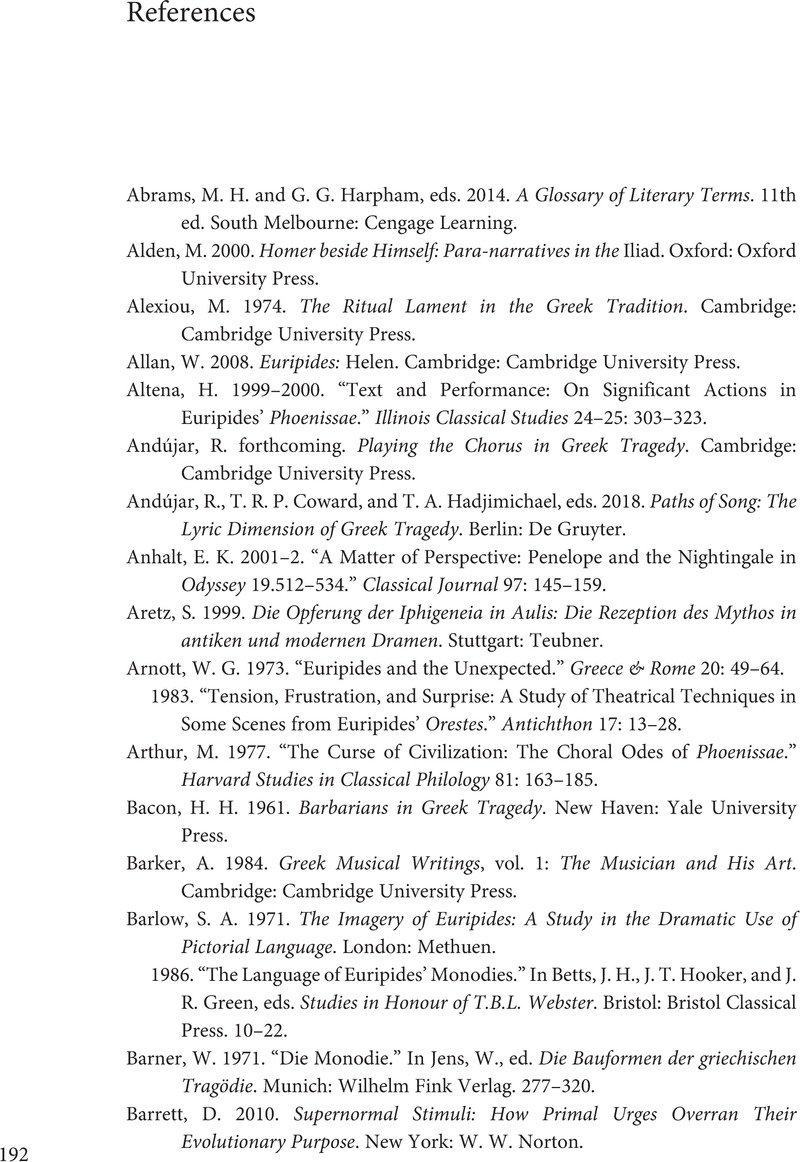Book contents
- Monody in Euripides
- Monody in Euripides
- Copyright page
- Dedication
- Contents
- Acknowledgments
- Note on Editions and Translations
- Introduction
- 1 Ion
- 2 Iphigenia among the Taurians
- 3 Phoenician Women
- 4 Orestes
- Conclusion
- Appendix Actor’s Song in the Extant Plays of Aeschylus, Sophocles, and Euripides
- References
- Index
- References
References
Published online by Cambridge University Press: 27 July 2023
- Monody in Euripides
- Monody in Euripides
- Copyright page
- Dedication
- Contents
- Acknowledgments
- Note on Editions and Translations
- Introduction
- 1 Ion
- 2 Iphigenia among the Taurians
- 3 Phoenician Women
- 4 Orestes
- Conclusion
- Appendix Actor’s Song in the Extant Plays of Aeschylus, Sophocles, and Euripides
- References
- Index
- References
Summary

- Type
- Chapter
- Information
- Monody in EuripidesCharacter and the Liberation of Form in Late Greek Tragedy, pp. 192 - 213Publisher: Cambridge University PressPrint publication year: 2023



